Description
By Yoshio Manaka & Stephen Birch
Digital Goods, eBook
ISBN 9780912111322
A note on our eBooks: Our eBooks use Digital Rights Management (DRM), managed by Adobe, a systematic approach to copyright protection for digital media. Our eBooks are currently compatible with the Adobe Digital Editions reader, paired with an Adobe ID. Please see the eBook help page for more information on setting up and reading your eBooks.
Your access key and instructions will be sent in a separate email, apart from your order receipt, after payment is successfully processed, usually within 24-48 hours.
Dr. Yoshio Manaka was an insightful and masterful 20th century Japanese physician and healer whose clinical system, based in five-phase and meridian therapy constructs, finds its fullest expression in this text. This work introduces Dr. Manaka’s major clinical and theoretical accomplishments by describing how what he terms the “X-signal system” is the foundation of human topology, function, and response. In essence, the X-signal system defines qi, yin-yang, and the five phases as clinical events, just as traditional Oriental thinkers recognized these ideas through right-brain pattern recognition. While Dr. Manaka references some of the most advanced scientific thinking of our era — information theory, holographic models and new paradigms — his explanations are full of practical tests which readers can use to confirm his ideas for themselves.
The core of the text is a complete description of Dr. Manaka’s treatment system. This is of great importance, not only because Dr. Manaka was recognized in both Japan and China as one of the foremost practitioners of his generation,but also because the system has already proven itself adaptable to many others. It is thus a clinical manual of unique value because it describes Dr. Manaka’s most important techniques: ion pumping and other root treatments, as well as his distinctive use of fire needles, channel stimulation techniques, sotai, moxibustion, and other modern Chinese and Japanese clinical developments. Beginning with a step-by-step template for formulating and confirming a diagnosis, Dr. Manaka provides the instructions necessary to apply these techniques quickly and with confidence. The text concludes with case histories and appendices that provide supporting technical details.
This definitive text describes Yoshio Manaka’s treatment approach as well as his research in and understanding of acupuncture. One of the most famous Japanese acupuncturists of this century, his insights and accomplishments clearly define his as an important historical figure in the field. Typical of the Japanese tradition of clinical investigation of historical ideas, the first half of this densely packed book describes a variety of methods that he used to investigate basic theories of acupuncture: channel pathways, directions of flow and yin-yang subsets, basic yin-yang theory and five phase theory, properties of special points such as the five phase points, meeting points, etc. The findings of these clinical investigations provide the basis of Manaka’s rich and diverse clinical practice, and the basic theory he used to guide both diagnosis and treatment. Key among the theories is his use of the octahedral model to understand the extraordinary vessels, channels and yin yang theory. His general model of the x-signal system provides a very useful bridge to a modern understanding of traditional ideas and methods. His overview of the theoretical basis of acupuncture is very rich and insightful.
The clinical diagnosis features palpation, especially of the abdominal region. The treatment methods are described in a systematic four step approach with typical, alternate and a variety of back up treatment methods and strategies for each step. Uses of the ion pumping cords are described in great detail, as are a variety of other methods, such as open points, needling, moxa, intradermal needles, light, sound etc. The methods covered in this book describe an extremely flexible and adaptable treatment approach that extends treatment to a wider variety of patients than are usually helped by standard acupuncture approaches. Manaka had a considerable clinical experience accumulated over 45 years of practice. His methods and cases provide a rare insight into how a senior clinician handles such a busy practice. The detail he provides is rarely matched in other books on acupuncture.
In addition there are a number of fascinating appendices exploring a wide range of research topics and other ideas. This book is a must for anyone wishing to open their perspectives as they attempt to deepen their understanding of acupuncture. It is also packed with very useful clinical and technical details.
Praise for Chasing the Dragons Tail
“…never before has this reviewer found, in one text, so much information that can be incorporated in both a TCM and a Meridian Therapy framework. All through the book we are encouraged to test and confirm everything that is presented, which is altogether refreshing approach. We are inspired not just to ‘Chase the Dragon’s Tail,’ but to ride the Dragon home.”
-Pacific Journal of Oriental Medicine
“Once in a while a book comes along that attempts to transcend the known boundaries of knowledge and forge a new paradigm. Chasing the Dragon’s Tail … is indeed one of these books. Manaka was a forward-thinking and innovative acupuncture practitioner who attempted to integrate traditional Chinese energy concepts with the new sciences. [This is accomplished] in a language that is applicable not only to acupuncturists, but to the clinicians of the future.”
-Christopher Zaslawaski, Meeting Point

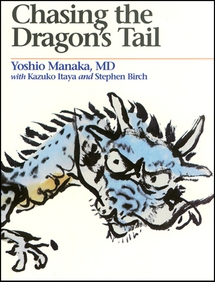
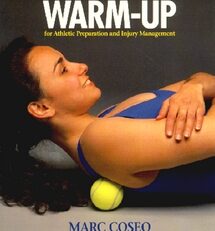

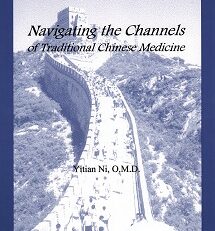
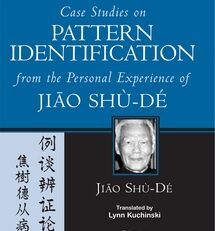
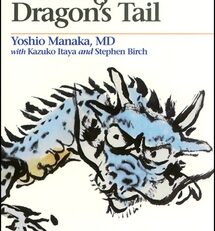
Reviews
There are no reviews yet.